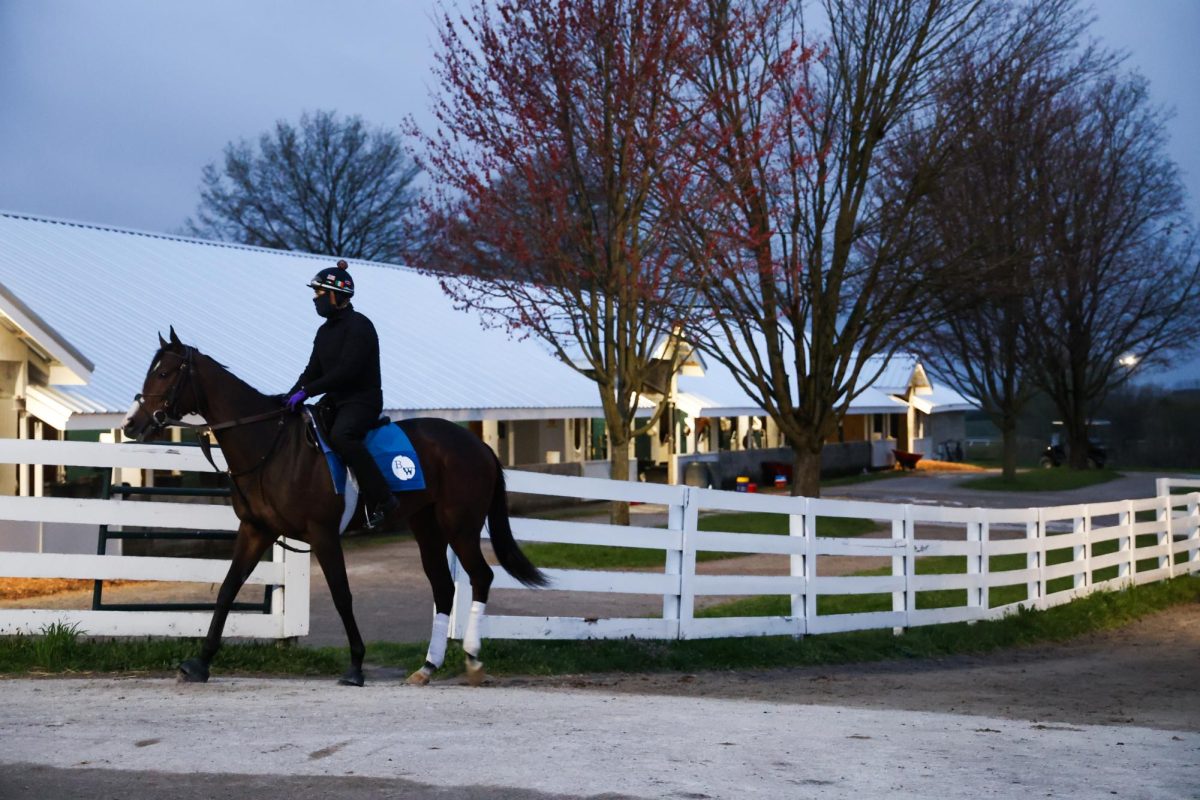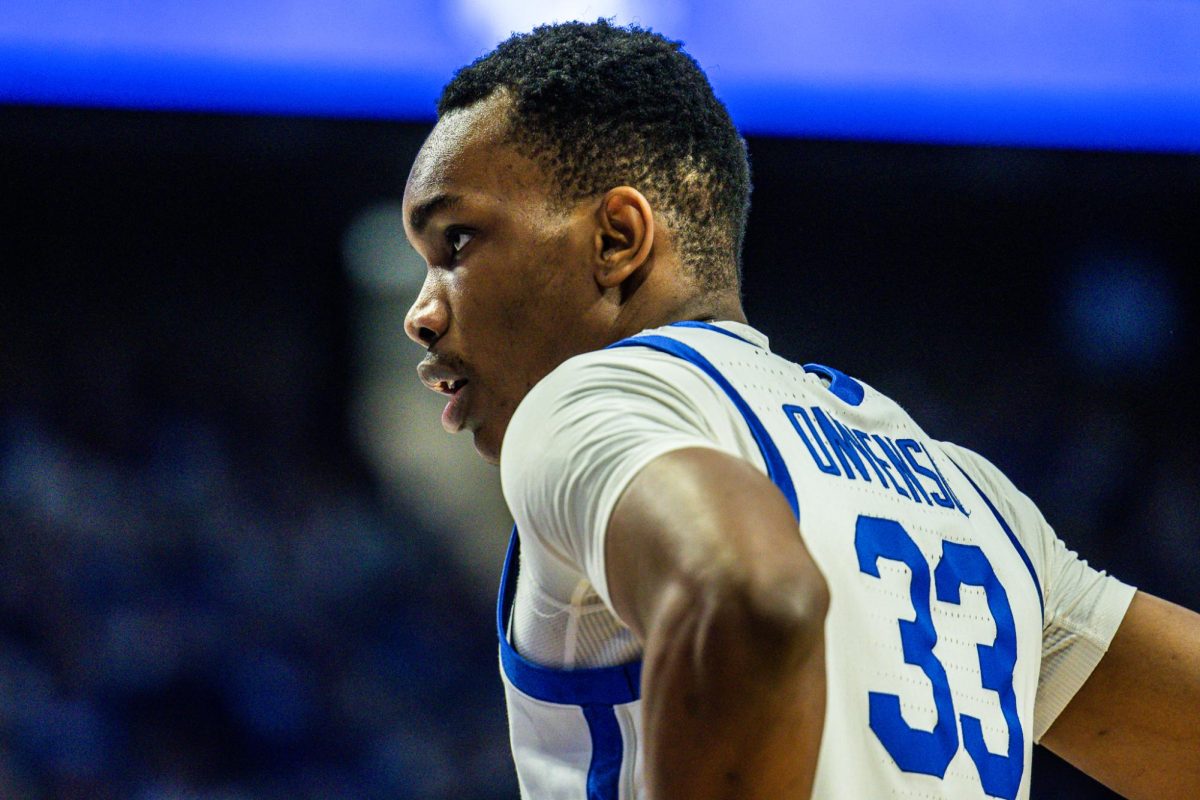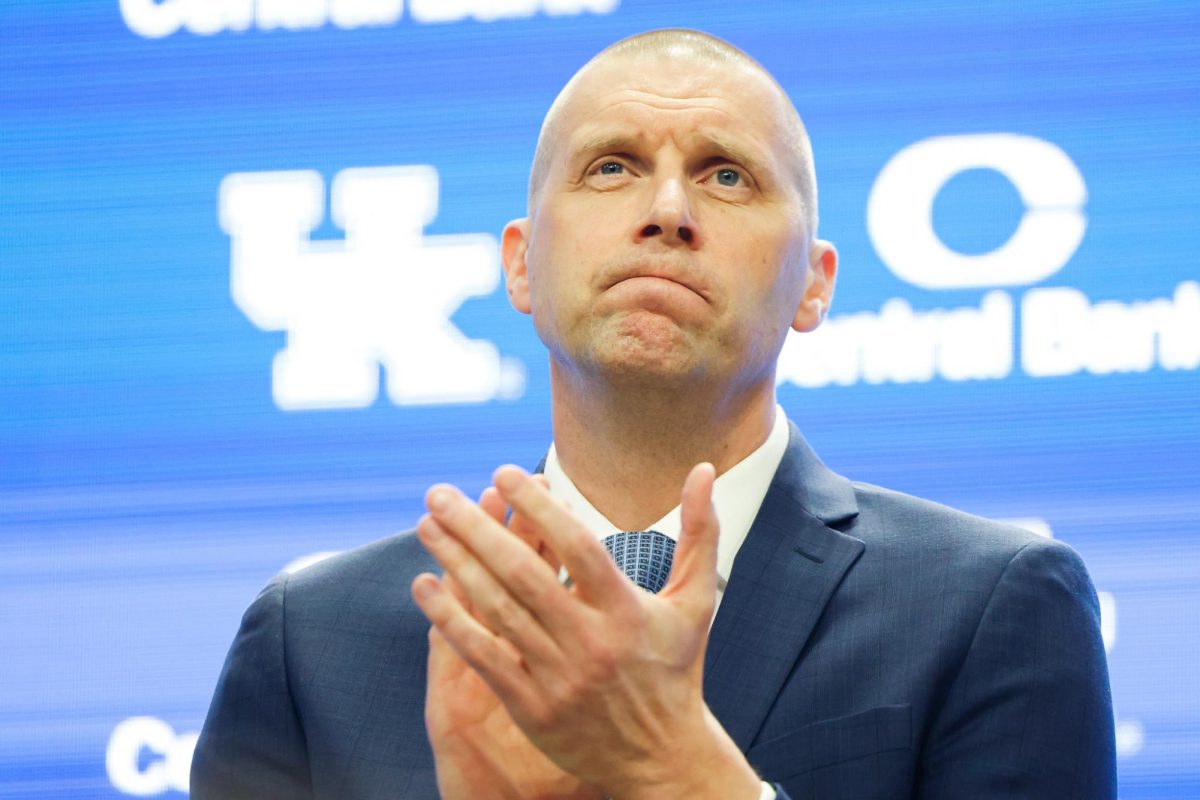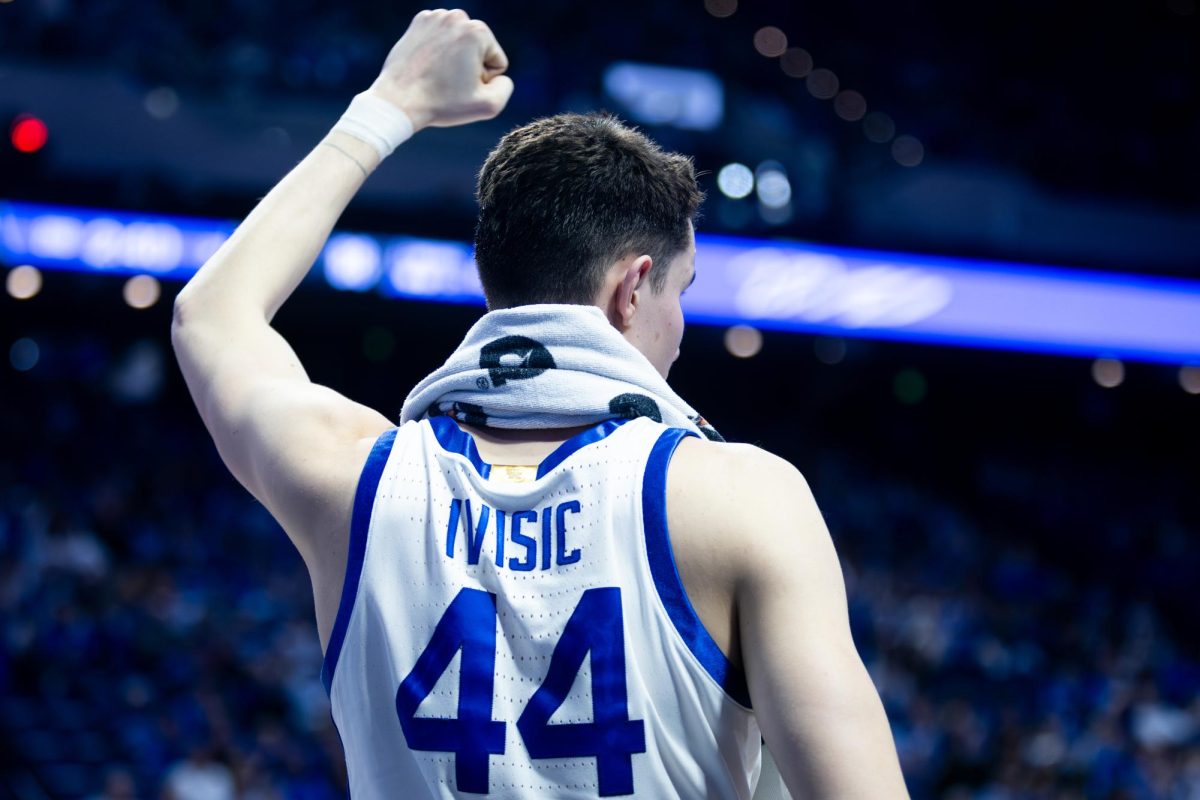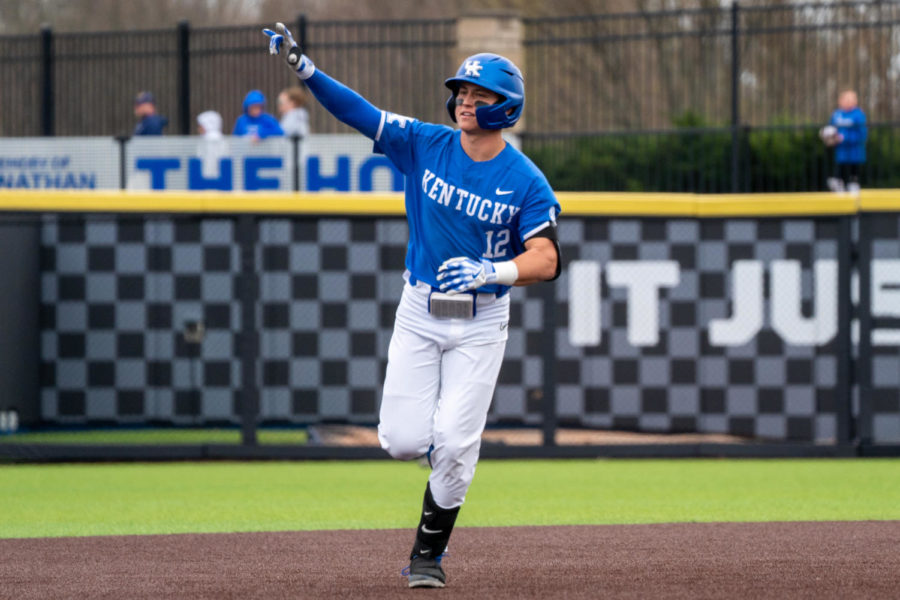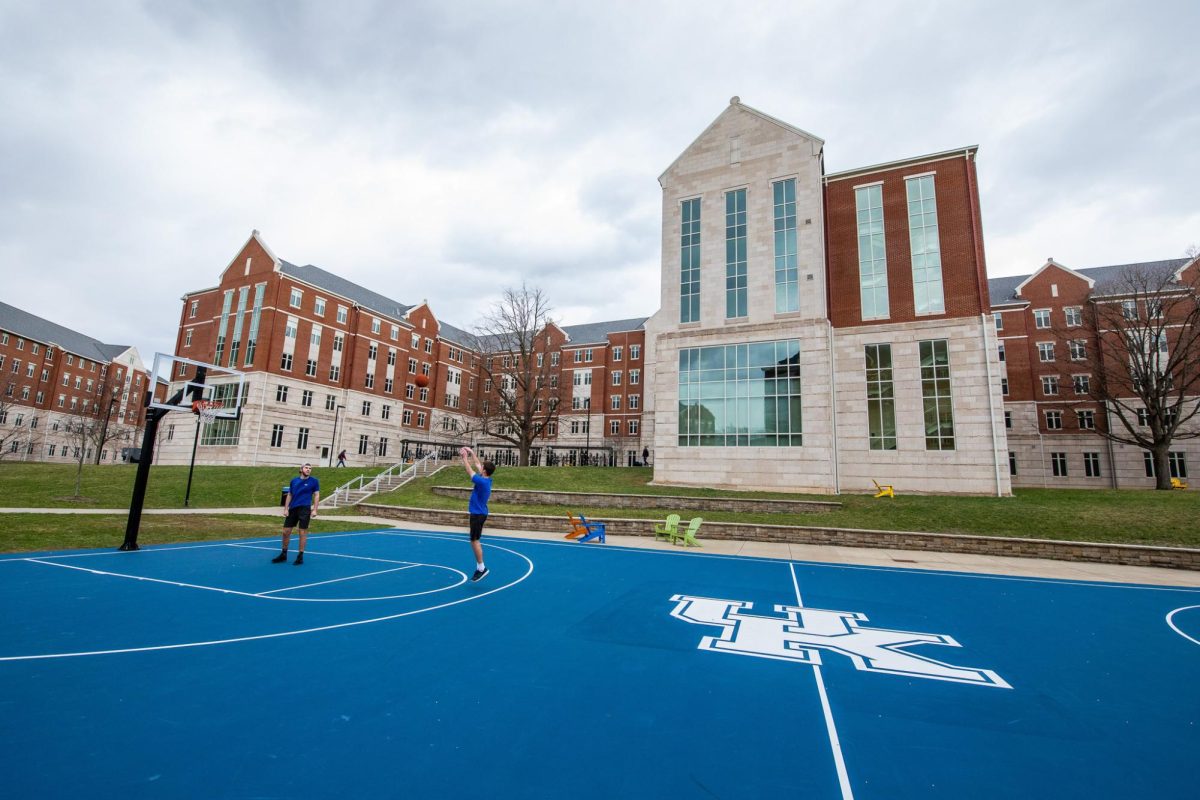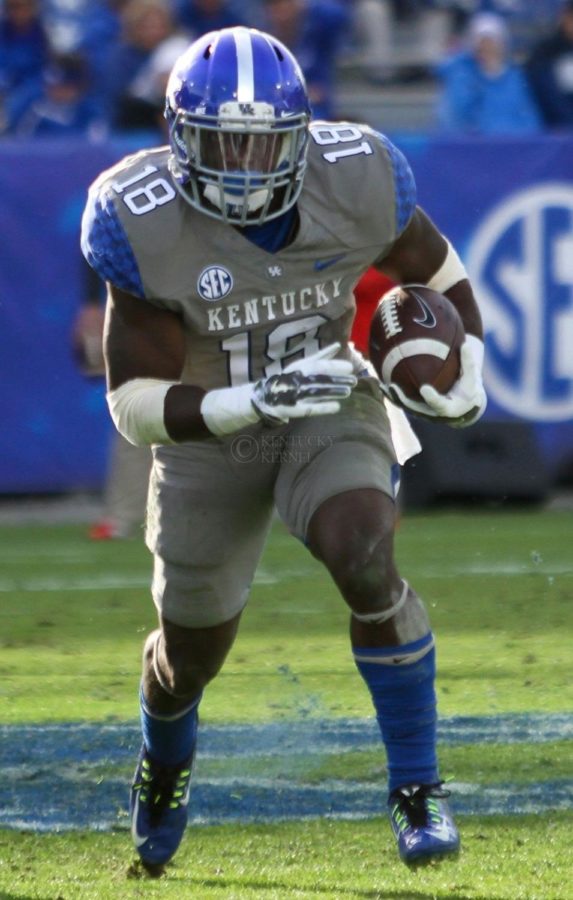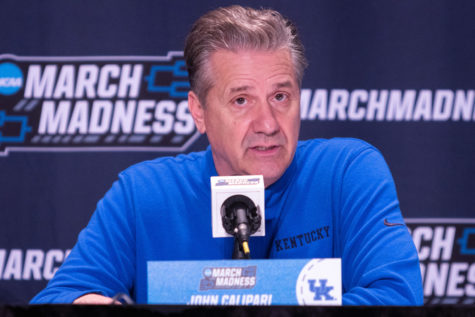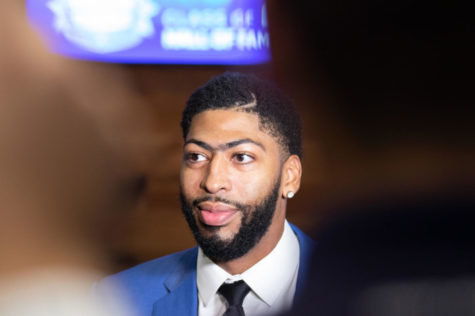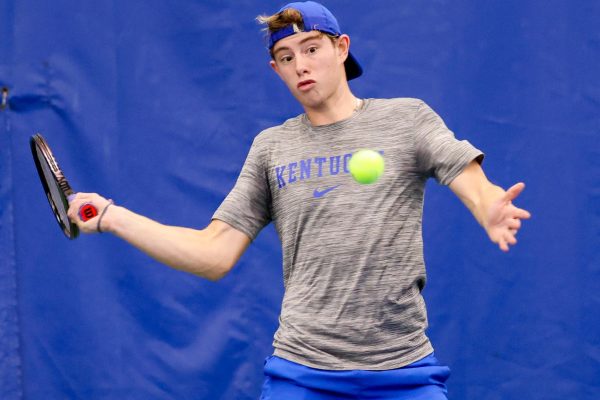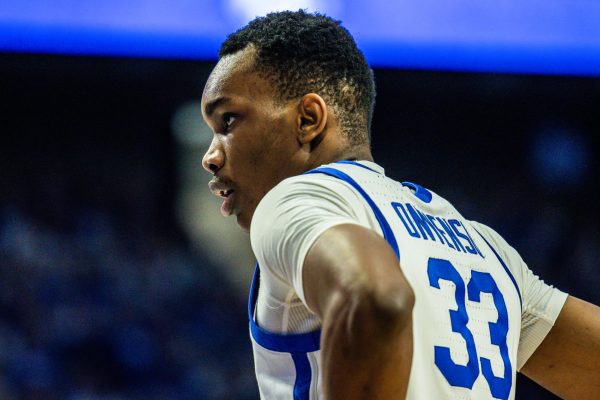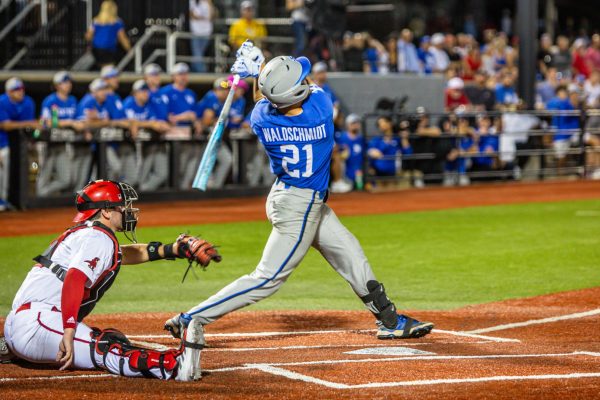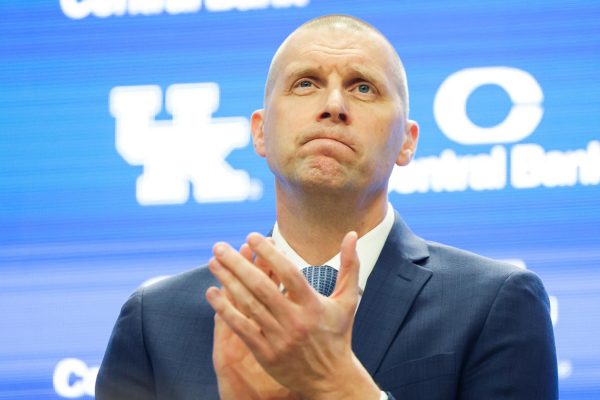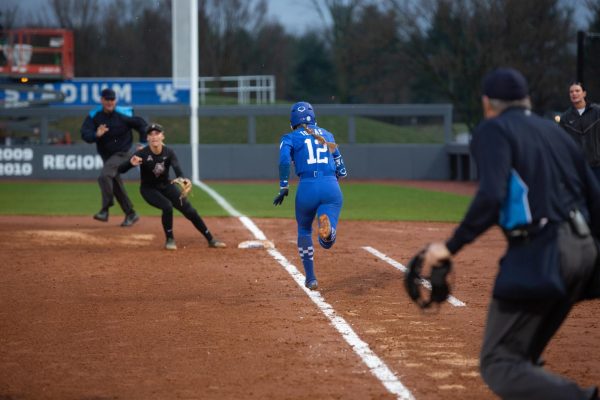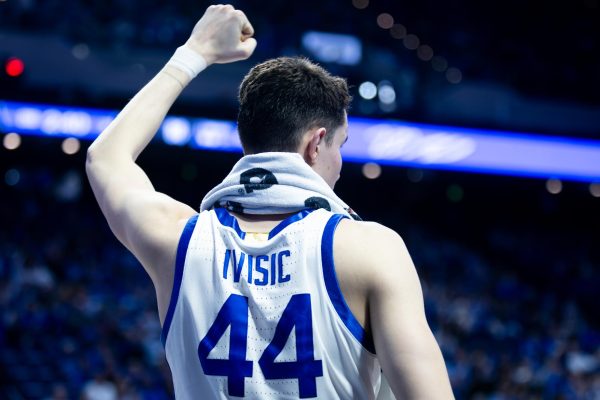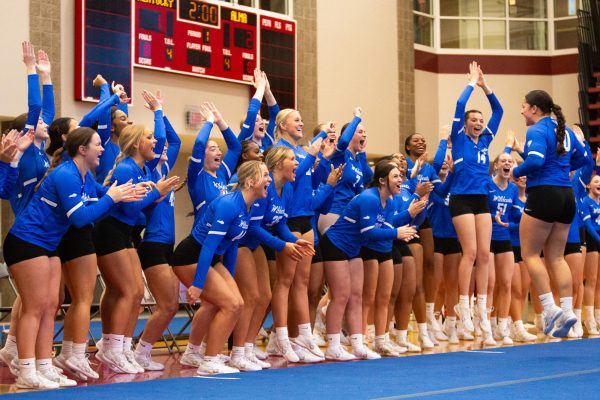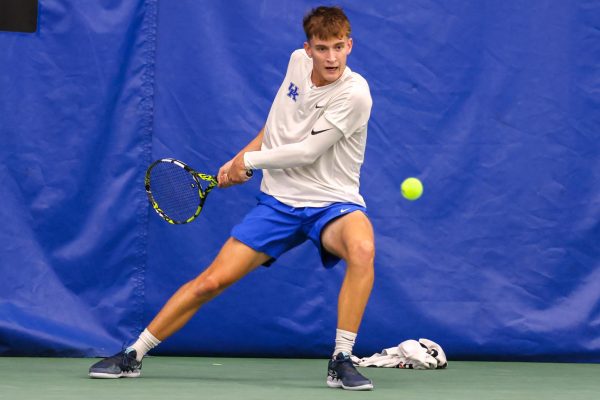Report Card: Running backs fail to live up to expectations
Kentucky running back Stanley Williams runs through a hole in the defense during the second half of the game against the University of Georgia Bulldogs at Commonwealth Stadium on Friday, November 7, 2014 in Lexington, Ky. Georgia defeated Kentucky 63-31.Photo by Jonathan Krueger
December 10, 2014
By Joshua Huff
On paper, the depth at running back for UK entering the season rivaled that of the top teams in the SEC.
With incumbent Jojo Kemp coming off a freshman season in which he rushed for 482 yards on 100 carries, and the additions of Nebraska transfer Braylon Heard, true freshmen Stanley “Boom” Williams and Mikel Horton, the expectations of the backfield far exceeded that of any other position on the offense.
However, reality rarely lives up to expectations as a continuous rotation of running backs throughout the season dampened any hope of progress for the group. A true starter wasn’t named until the final game of the season against Louisville when Williams got the call and the bulk of the carries.
What is truly baffling is despite having such a talented backfield, former offensive coordinator Neal Brown deemed it necessary to rush quarterback Patrick Towles more than the running backs in a few games this season.
Take the Georgia game for instance, where Towles had 17 carries with Heard having just 13 and Williams just 10. Against Tennessee, Towles had 14 carries, with Heard the leading rusher for the running backs in attempts with six. It’s understandable to try to catch the defense off guard but when you have a backfield with that variety of talent, why submit your starting quarterback to the punishment when your backup is Reese Phillips?
Towles was the leading rusher in terms of attempts. He rushed 145 times. Think about that for a second. UK’s quarterback, with a fairly talented group of young wide receivers at his disposal, ran the ball nearly double than what Williams did, and Williams was the Cats leading rusher with 75 attempts for 488 yards and three touchdowns.
It’s incomprehensible that the coaching staff would preach about balance but when push came to shove, they ignored the running backs and gave the ball to its quarterback. With that being said — what in the world happened to Kemp? After his success running the Wildcat early in the season, he appeared to drop off everybody’s radar. Against the Cardinals, he carried the ball just once. Against the Volunteers, Kemp carried the ball just five times and was an afterthought against Missouri when he lost a yard on his only carry.
He peaked early in the season, with his best game coming against South Carolina in early October, which coincidentally was the last time the Wildcat worked for the Cats. With Williams emerging as the standout and go-to back, it wouldn’t be surprising if Kemp decided to transfer as his carries will significantly decrease, especially if in-state recruit Damien Harris decides to come to UK.
With the essence of this column focusing on allotting a grade based on the performance of the running backs, it feels reasonable to give the group a C-minus based on their performance and inconsistent play.















